Valley of the Pharaohs from Albatros Blue Spa Hurghada
One of the most unforgettable highlights of any Luxor day tour from Hurghada is a visit to the Valley of the Pharaohs—more commonly known as the Valley of the Kings. This ancient royal burial ground, nestled on the west bank of the Nile near Luxor, has fascinated travelers, archaeologists, and history lovers for centuries. From your stay at the Albatros Blue Spa Hurghada, a day trip to this legendary site is not only possible, but highly recommended for anyone who wants to experience the soul of Ancient Egypt.
There are two main sections: the East Valley, where the majority of the royal tombs are situated; and the West Valley, otherwise known as the Valley of the Monkeys.
The rulers of the Eighteenth, Nineteenth, and Twentieth Dynasties of Egypt’s prosperous New Kingdom (c.1550–1069 BC) were buried in a desolate dry river valley across the river from the ancient city of Thebes (modern Luxor), hence its modern name of the Valley of the Kings. This moniker is not entirely accurate, however, since some members of the royal family aside from the king were buried here as well, as were a few non-royal, albeit very high-ranking, individuals. The Valley of the Kings is divided into the East and West Valleys. The eastern is by far the more iconic of the two, as the western valley contains only a handful of tombs. In all, the Valley of the Kings includes over sixty tombs and an additional twenty unfinished ones that are little more than pits.
The site for this royal burial ground was selected carefully. Its location on specifically the west side of the Nile is significant as well. Because the sun god set (died) in the western horizon in order to be reborn, rejuvenated, in the eastern horizon, the west thus came to have funerary associations. Ancient Egyptian cemeteries were generally situated on the west bank of the Nile for this reason.
The powerful kings of the New Kingdom were laid to rest under the shadow of a pyramid-shaped peak rising out of the cliffs surrounding the valley. The selection of even the specific valley in which the royal tombs were excavated was not left to chance. The pyramid was a symbol of rebirth and thus eternal life, and the presence of a natural pyramid was seen as a sign of the divine. This entire area, and the peak itself, was sacred to a funerary aspect of the goddess Hathor: the “Mistress of the West”.
The isolated nature of this valley was yet another reason for its selection as the final resting place of the pharaoh. Tomb robberies occurred even in ancient times. The Egyptians were aware of this, having seen the a fate of the Old and Middle Kingdom pyramids, so they opted for hidden, underground tombs in a secluded desert valley. The first New Kingdom ruler that is confirmed to have been buried in the Valley of the Kings was Thutmose I (c.1504–1492 BC), the third king of the Eighteenth Dynasty. According to Ineni, the high official who was in charge of the digging of his tomb: “I oversaw the excavation of the cliff-tomb of his Person [the king] in privacy; none seeing, none hearing.
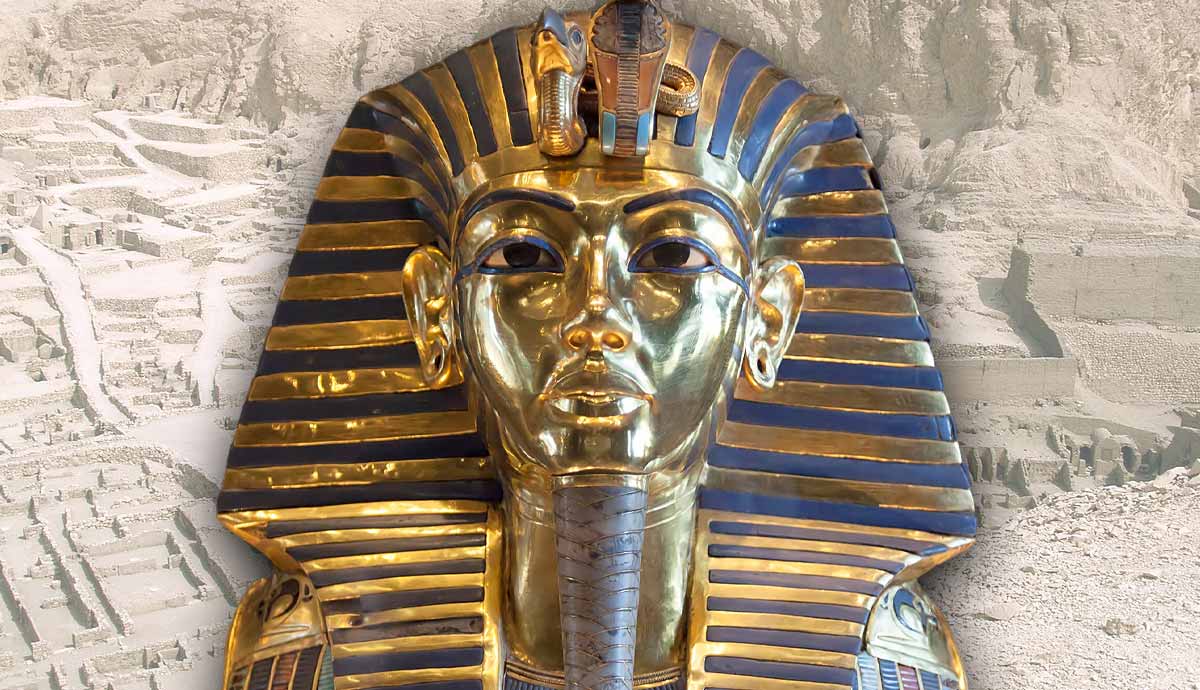
The Journey from Hurghada to the Valley of the Pharaohs
Your adventure begins early in the morning when you are picked up directly from Albatros Blue Spa Hurghada. Traveling by modern, air-conditioned coach or private minivan, you’ll cross the desert landscapes toward Luxor. The journey takes around four hours, giving you plenty of time to relax and enjoy the scenic transition from Red Sea coastlines to the fertile Nile Valley.
Upon arrival, you’ll cross the Nile to the West Bank of Luxor, where the Valley of the Pharaohs awaits. The contrast is striking: golden cliffs and rugged mountains hide one of the most sacred places in Egyptian history.
Why the Valley of the Pharaohs is So Special
The Valley of the Pharaohs served as the burial ground for Egypt’s New Kingdom rulers (1550–1070 BC). Instead of building gigantic pyramids, pharaohs like Ramses II, Seti I, and Tutankhamun chose hidden tombs carved deep into the limestone hills. The goal was both spiritual and practical—protecting their treasures for eternity while helping the soul journey safely to the afterlife.
Each tomb is a masterpiece. The walls are covered in colorful hieroglyphs, depicting the Book of the Dead, scenes of gods and goddesses, and the pharaoh’s path to immortality. Some tombs still preserve their vibrant colors even after more than 3,000 years.
Famous Tombs You Might Visit
While the number of open tombs rotates to protect the delicate art, visitors typically get access to several highlights:
Tutankhamun’s Tomb (KV62): The boy-king’s burial chamber, discovered nearly intact in 1922, remains one of the greatest archaeological finds in history.
Tomb of Ramses III: Decorated with detailed reliefs and striking colors.
Tomb of Seti I: One of the most beautifully decorated tombs, though sometimes requires an extra ticket.
Your Egyptologist guide will explain the meanings of the inscriptions, giving you a window into the beliefs and daily life of ancient Egyptians.
Practical Tips for Visitors from Albatros Blue Spa Hurghada
Timing: Valley tours usually take place in the late morning, when the sun can be intense—bring hats, sunglasses, and water.
Tickets: A standard ticket allows entry into three tombs, while special tombs like Seti I or Tutankhamun require additional fees.
Photography: Flash photography is forbidden inside, and in some cases, special tickets are required for cameras.
Clothing: Light, breathable fabrics are best, but dress modestly out of respect for local culture.
Why This Experience is Unforgettable
Standing inside a royal tomb is like stepping into another world. The silence of the chamber, the glow of the ancient paintings, and the thought that these walls once guarded Egypt’s most powerful kings create an emotional experience unlike any other. Many travelers describe the Valley of the Pharaohs as the spiritual climax of their entire trip to Egypt.
When you return to your hotel at Albatros Blue Spa Hurghada in the evening, you’ll not only carry photos and memories—you’ll take with you a deeper connection to one of the greatest civilizations in human history.
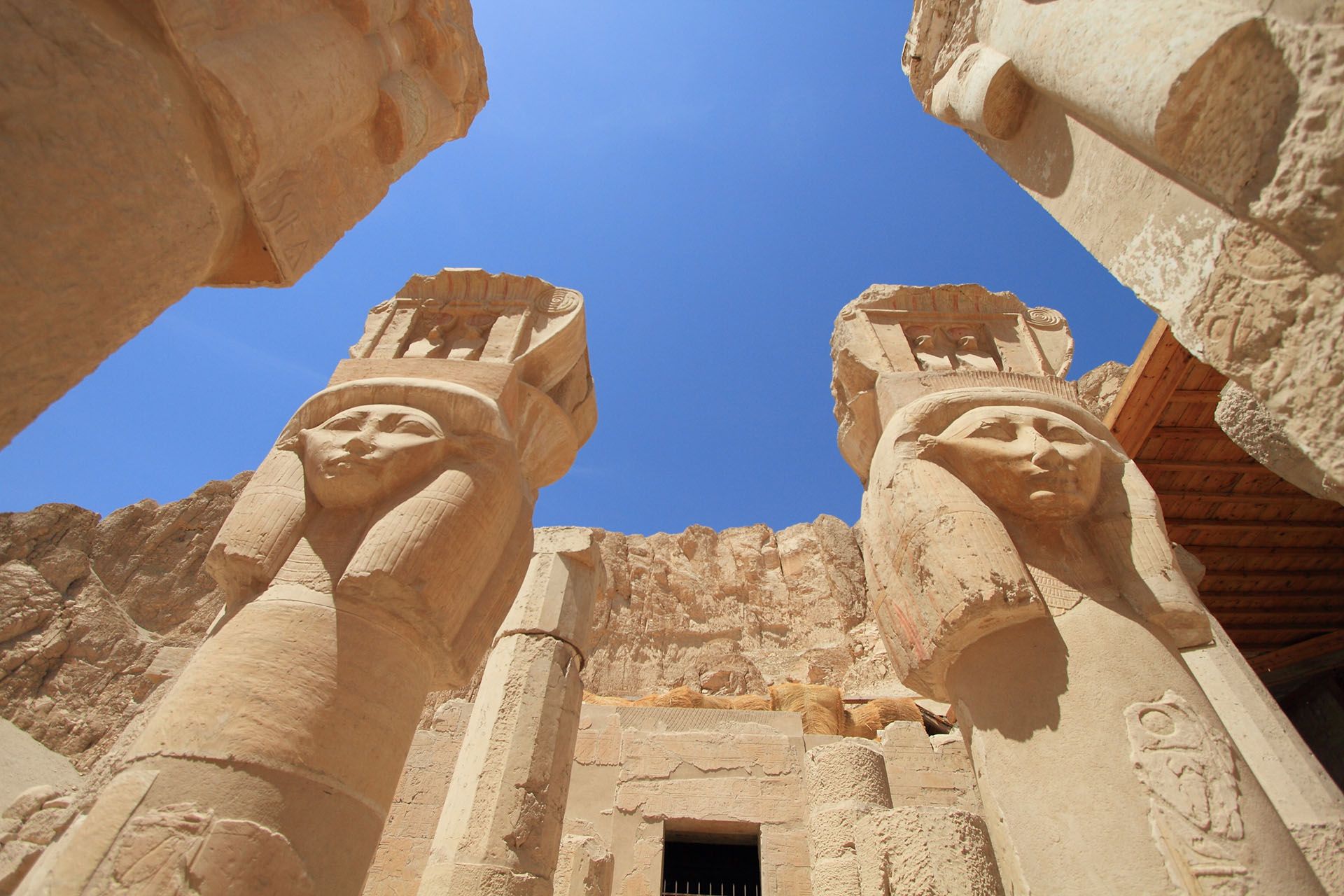
Valley of the Pharaohs from Albatros Blue Spa Hurghada
When staying at the luxurious Albatros Blue Spa in Hurghada, many travelers dream of exploring the timeless wonders of Luxor. Among all the attractions, none captures the imagination quite like the Valley of the Pharaohs, also widely known as the Valley of the Kings. Booking a Valley of the Pharaohs from Albatros Blue Spa Hurghada tour is more than just a sightseeing excursion—it is a journey across 3,000 years of history, mythology, and ancient Egyptian beliefs about life, death, and eternity.
Why Choose a Valley of the Pharaohs Tour from Albatros Blue Spa Hurghada?
Guests at Albatros Blue Spa already enjoy a world-class Red Sea experience with modern amenities, wellness programs, and a tranquil beachfront. Yet, the contrast of leaving the sea breeze behind for the silent desert cliffs of Luxor makes the trip extraordinary. By booking a Valley of the Pharaohs from Albatros Blue Spa Hurghada day tour, visitors enjoy:
Comfortable, air-conditioned transfers directly from the hotel.
Professional Egyptologist guides who bring history to life.
Hassle-free access to one of the world’s greatest archaeological treasures.
A balance of relaxation and cultural immersion in one holiday.
For those who want both rejuvenation and adventure, the combination of Albatros Blue Spa’s luxury with the raw history of Luxor is unforgettable.
The Valley of the Pharaohs: A Living Museum of Ancient Egypt
The Valley of the Pharaohs is located on the west bank of the Nile, directly opposite Luxor, the site of ancient Thebes. This sacred valley served as the royal necropolis for the mighty rulers of the 18th, 19th, and 20th dynasties during Egypt’s New Kingdom (c. 1550–1069 BC). Unlike the pyramids of earlier dynasties, which were visible targets for tomb robbers, these burials were hidden deep inside limestone cliffs.
Today, over 60 tombs have been discovered, ranging from simple shafts to elaborate, decorated chambers stretching far into the rock. A Valley of the Pharaohs from Albatros Blue Spa Hurghada tour allows travelers to step inside some of these tombs, where the walls are still covered in colorful hieroglyphs and scenes of the pharaoh’s journey into the afterlife.
Highlights include:
Tutankhamun’s Tomb – Famous for its treasures, though much of it is displayed in Cairo, the tomb itself still inspires awe.
Ramses VI’s Tomb – Known for its astronomical ceiling paintings.
Seti I’s Tomb – Among the most beautifully decorated, though often requires a special ticket.
Symbolism of the West
For ancient Egyptians, the west bank of the Nile was not chosen by accident. The sun god Ra set in the west every evening, symbolizing death, and rose again in the east, symbolizing rebirth. The Valley of the Pharaohs, under the protective shadow of a pyramid-shaped mountain peak, became the sacred “gateway to eternity.” On your Valley of the Pharaohs from Albatros Blue Spa Hurghada tour, your guide will explain how this symbolism shaped Egyptian funerary traditions.
What Makes the Journey from Albatros Blue Spa Special?
Guests who embark on the Valley of the Pharaohs from Albatros Blue Spa Hurghada tour enjoy a carefully curated experience:
Morning departure: A private or group vehicle picks you up directly at the hotel entrance.
Scenic drive: The journey passes through desert landscapes, small villages, and the Nile Valley, offering glimpses of everyday Egyptian life.
Expert narration: An Egyptologist guide explains not only the monuments but also the culture and beliefs that shaped them.
Personalized comfort: Travelers return to the spa resort in the evening, with time to relax in the pool or enjoy a massage after a day of exploration.
This combination of modern comfort and ancient exploration is what makes the Valley of the Pharaohs from Albatros Blue Spa Hurghada such a unique and enriching excursion.
Emotional Connection: Walking in the Footsteps of Kings
Imagine leaving the cool waters of Hurghada’s Red Sea and, within a few hours, stepping into the silent corridors of a pharaoh’s tomb. The air is dry and still, and the paintings on the walls glow under the soft lights. Every symbol, every carving, was placed here more than three millennia ago with one purpose: to ensure the king’s eternal life.
For many travelers, this moment—standing where pharaohs like Tutankhamun, Ramses II, or Seti I were laid to rest—is the emotional climax of their Egyptian holiday. The Valley of the Pharaohs from Albatros Blue Spa Hurghada is not just a day trip; it is an encounter with eternity.
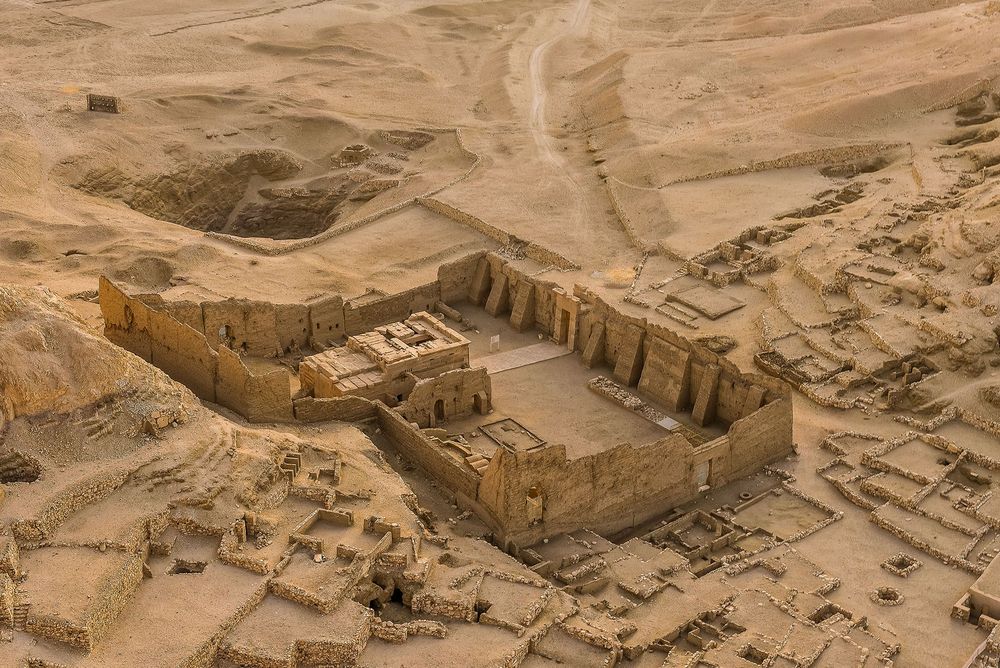
History & Origins of the Valley of the Pharaohs
The Valley of the Pharaohs, more commonly known as the Valley of the Kings, is not just a desert canyon filled with tombs—it is the very heart of Ancient Egypt’s story of eternity. For guests booking a Valley of the Pharaohs from Albatros Blue Spa Hurghada excursion, the historical depth of this site transforms the trip from a sightseeing tour into a true pilgrimage through time.
The Birth of a Sacred Valley
The rulers of Egypt’s New Kingdom (c. 1550–1069 BC) faced a unique problem. The pyramids of earlier dynasties, though magnificent, had become easy targets for tomb robbers. These massive monuments advertised their presence on the horizon, and their treasure-filled chambers were too tempting for thieves. By the 18th Dynasty, Egyptian kings needed a new way to protect their eternal resting places.
Thus, the Valley of the Pharaohs was chosen. This isolated desert valley on the west bank of the Nile, across from the thriving capital of Thebes (modern Luxor), offered the secrecy, sacred symbolism, and natural defenses they desired. The sun god Ra set in the west, making the western desert a fitting gateway to the afterlife. Overlooking the valley was a pyramid-shaped peak, known today as al-Qurn, which the Egyptians believed symbolized rebirth.
On your Valley of the Pharaohs from Albatros Blue Spa Hurghada tour, your guide may point out this peak, explaining how it connected the tombs below with divine protection.
The First Pharaohs of the Valley
The first confirmed pharaoh to be buried in the valley was Thutmose I, around 1500 BC. His tomb was dug in secret, with strict orders that no one outside the royal builders and priests should know its location. The court official Ineni, who oversaw its construction, proudly stated:
“I oversaw the excavation of the cliff-tomb of his Majesty in privacy; none seeing, none hearing.”
This secrecy was a turning point in Egyptian funerary tradition. Instead of towering pyramids, the pharaohs now rested in hidden underground chambers.
Over time, more than 60 tombs were carved into the valley. Some belonged to great kings like Ramses II and Seti I, while others housed royal family members and high officials. For travelers from Albatros Blue Spa Hurghada to the Valley of the Pharaohs, visiting these tombs is like walking through chapters of Egypt’s greatest era.
East and West Valleys
The Valley of the Pharaohs is divided into two areas: the East Valley and the West Valley.
The East Valley is the main site, home to most of the famous tombs, including Tutankhamun’s. This is the area most tourists visit on a day trip.
The West Valley is smaller, containing only a handful of tombs, including that of Amenhotep III.
When booking a Valley of the Pharaohs from Albatros Blue Spa Hurghada tour, most itineraries focus on the East Valley, but some premium tours may include access to special tombs in the West Valley.
Sacred Symbolism of the West
Why did the Egyptians always bury their dead on the west bank of the Nile? The answer lies in religion. The journey of the sun each day was a metaphor for life and death: rising in the east symbolized birth, setting in the west symbolized death, and the cycle promised rebirth.
Thus, all major necropolises in Egypt were located on the west bank—Giza near Cairo, Saqqara near Memphis, and Thebes’s Valley of the Pharaohs.
When you arrive on your Valley of the Pharaohs from Albatros Blue Spa Hurghada trip, standing in the silent valley under the shadow of the pyramid-shaped peak, it becomes clear why the ancients chose this sacred place.
The Construction of the Tombs
The tombs of the Valley were carved directly into the limestone cliffs. Workers labored under secrecy, chiseling corridors, burial chambers, and side rooms deep underground. Walls were plastered and then painted with scenes from the Book of the Dead, the Amduat, and other sacred texts that guided the pharaoh through the afterlife.
The deeper the tomb, the more elaborate the decoration. Some tombs stretch hundreds of feet underground, filled with passages, false doors, and magical symbols. A Valley of the Pharaohs from Albatros Blue Spa Hurghada guide often points out how each pharaoh sought to outdo his predecessors with grander tombs, more elaborate artwork, and greater symbolic depth.
Famous Discoveries
The most famous tomb is undoubtedly that of Tutankhamun, discovered almost intact in 1922 by Howard Carter. While most tombs were robbed in antiquity, Tutankhamun’s small, overlooked burial chamber still contained golden treasures, jewelry, and the famous death mask that now resides in Cairo’s Egyptian Museum.
Other notable tombs include:
Ramses VI’s tomb (KV9) – Renowned for its astronomical ceiling.
Seti I’s tomb (KV17) – One of the longest and most beautifully decorated tombs.
Ramses III’s tomb (KV11) – Filled with striking wall reliefs.
For visitors traveling on the Valley of the Pharaohs from Albatros Blue Spa Hurghada tour, entering these tombs is like stepping into a time capsule of Ancient Egypt.
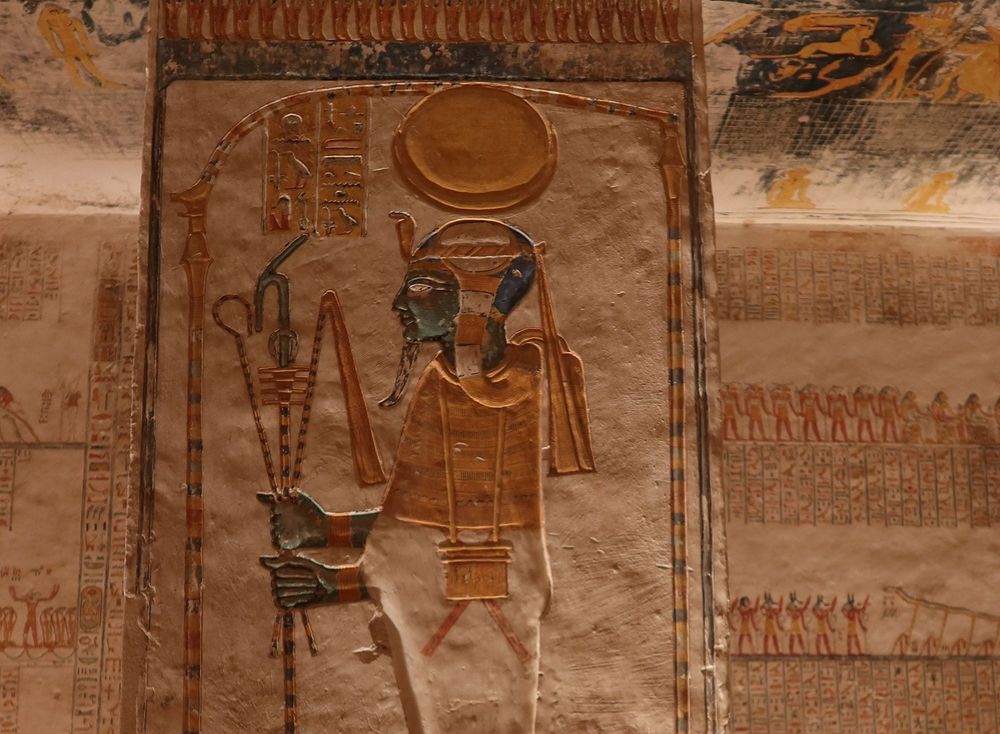
Tomb Robberies and Preservation
Despite the secrecy, many tombs were robbed in antiquity. Priests later moved mummies from their original tombs to hidden caches, such as the famous royal mummy cache at Deir el-Bahari, where dozens of pharaohs were found together in the 19th century.
Today, the Egyptian government carefully monitors tomb access to preserve them for future generations. Lighting, humidity, and visitor numbers are strictly controlled. On your Valley of the Pharaohs from Albatros Blue Spa Hurghada tour, your guide will explain which tombs are open on the day of your visit, as access rotates to reduce wear.
The Valley Today
The Valley of the Pharaohs is now a UNESCO World Heritage Site, drawing millions of visitors each year. Yet, despite the crowds, it remains an overwhelmingly spiritual place. The silence of the desert, the grandeur of the tombs, and the timeless aura of eternity make it one of the most unforgettable destinations in the world.
For travelers staying at Albatros Blue Spa in Hurghada, the journey to this valley is not just a day trip—it is an immersion into the very soul of Egypt. The Valley of the Pharaohs from Albatros Blue Spa Hurghada is a bridge between luxury relaxation on the Red Sea and the eternal mysteries of the Nile Valley.
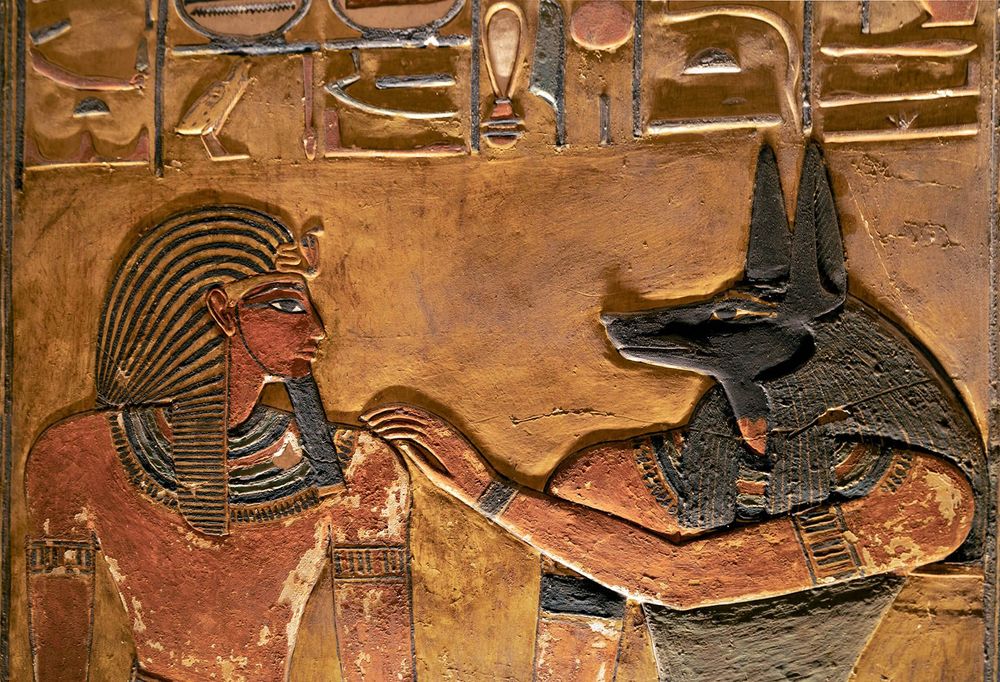
The Most Famous Tombs of the Valley of the Pharaohs
When you embark on a Valley of the Pharaohs from Albatros Blue Spa Hurghada tour, one of the highlights is entering the tombs themselves. Though over sixty have been discovered, only a select number are open to visitors at any given time. Each tomb tells its own story—of kings who ruled Egypt, of spiritual beliefs carved in stone, and of an eternal journey into the afterlife.
Below are the most famous and significant tombs you may encounter.
The Tomb of Tutankhamun (KV62)
No name in Ancient Egypt captures the imagination more than Tutankhamun. His tomb, discovered in 1922 by Howard Carter, remains the most famous archaeological find of the 20th century. Although much of his treasure is now displayed in Cairo, standing inside Tutankhamun’s small burial chamber is an emotional experience.
Highlights: Visitors can see Tutankhamun’s mummy, displayed in a glass case, along with painted walls showing scenes from his afterlife.
Why it’s special: The tomb was discovered nearly intact, giving the world a glimpse into the wealth and artistry of New Kingdom burials.
Traveler experience: On your Valley of the Pharaohs from Albatros Blue Spa Hurghada visit, entering this tomb is often optional with an additional ticket—but for many, it’s worth every moment.
The Tomb of Seti I (KV17)
Often considered the most beautiful tomb in the valley, Seti I’s burial chamber stretches more than 450 feet deep into the rock. Its walls are covered with finely preserved reliefs and vivid paintings from texts like the Book of the Dead.
Highlights: Multi-chamber layout, exquisite artwork, and detailed carvings.
Why it’s special: Regarded as a masterpiece of New Kingdom art.
Traveler tip: Access requires a separate premium ticket, but if available during your Valley of the Pharaohs from Albatros Blue Spa Hurghada tour, it’s highly recommended.
The Tomb of Ramses VI (KV9)
This tomb is famous for its astronomical ceiling, which depicts the sky goddess Nut arching over the earth, along with constellations and stars. It’s one of the most visually striking tombs open to visitors.
Highlights: Stunning ceiling art, grand corridor design, colorful preservation.
Why it’s special: Combines royal majesty with cosmic symbolism.
Traveler experience: This tomb is often included in standard tickets, making it a highlight of most Valley of the Pharaohs from Albatros Blue Spa Hurghada itineraries.
The Tomb of Ramses III (KV11)
Ramses III was one of the last great warrior pharaohs, and his tomb reflects his power. The walls are filled with depictions of gods, demons, and protective spells meant to ensure the king’s safety in the afterlife.
Highlights: Long decorated corridors, vivid wall reliefs, mythological figures.
Why it’s special: Gives insight into late New Kingdom religious beliefs.
Traveler tip: Many Valley of the Pharaohs from Albatros Blue Spa Hurghada day tours include this tomb, as it’s among the most impressive yet accessible.
The Tomb of Merenptah (KV8)
Successor to Ramses II, Merenptah’s tomb is massive and imposing. It contains a large granite sarcophagus and impressive carvings, though some areas are unfinished.
Highlights: Large burial chamber, massive sarcophagus fragments.
Why it’s special: Its sheer scale demonstrates the continued power of the 19th Dynasty.
The Tomb of Horemheb (KV57)
Horemheb, the last pharaoh of the 18th Dynasty, left behind a tomb with unique architectural features. Its transitional style makes it historically important, bridging the artistic styles of two great dynasties.
Highlights: Combination of 18th and 19th Dynasty art styles.
Why it’s special: Marks the shift from one era of pharaohs to another.
Other Notable Tombs
Tomb of Amenhotep II (KV35) – Known for its hidden cache of royal mummies discovered in the 19th century.
Tomb of Thutmose III (KV34) – One of the oldest in the valley, carved high into a cliff.
Tomb of Ramses V (KV9) – Later reused by Ramses VI, now one of the valley’s most-visited sites.
What to Expect as a Traveler
During a Valley of the Pharaohs from Albatros Blue Spa Hurghada tour, your Egyptologist guide will usually select three open tombs included in the entry ticket. Additional tickets may be purchased for premium tombs like Seti I or Tutankhamun. Inside the tombs, photography is often restricted, and visitors are asked to move quietly and respectfully.
The experience is unforgettable: stepping into a dimly lit chamber where vibrant paintings glow across the walls, each stroke of color placed there more than 3,000 years ago to guide a king’s soul into eternity.
The Tombs as a Bridge Between Worlds
The tombs of the Valley were not designed as memorials for the living—they were spiritual machines meant to transform the deceased pharaoh into a god. Every corridor symbolized stages of the afterlife, every wall painting a spell of protection, every carving a map to eternity.
Standing within these tombs, travelers from all over the world—whether from Albatros Blue Spa Hurghada to the Valley of the Pharaohs, or from other corners of Egypt—share the same sense of awe. These are not just monuments. They are whispers of eternity carved in stone.
The Religious Beliefs and Afterlife Myths Behind the Tombs
The Valley of the Pharaohs, also known as the Valley of the Kings, was not merely a burial ground—it was a sacred landscape shaped by the religious beliefs of Ancient Egypt. To understand the significance of this valley and its monumental tombs, one must first appreciate the intricate web of myths, gods, and afterlife traditions that inspired their construction. These beliefs not only dictated how tombs were built but also why the valley became the ultimate resting place for Egypt’s most powerful rulers.
5.1 The Journey of the Sun and the Cycle of Rebirth
The west bank of the Nile, where the Valley of the Pharaohs is located, held deep symbolic meaning for the Ancient Egyptians. The daily journey of the sun was central to their worldview:
The sun god Ra was believed to die in the western horizon at sunset and be reborn in the east at sunrise.
This cycle represented death and resurrection, making the west bank of the Nile the ideal place for burials.
Pharaohs, who were seen as divine intermediaries, were thought to join Ra in this eternal journey, ensuring their resurrection and eternal rule in the afterlife.
Thus, the valley’s location was not accidental—it was chosen to align with the cosmic journey of the sun.
5.2 Osiris: Lord of the Afterlife
No discussion of Ancient Egyptian funerary beliefs can ignore Osiris, the god of the dead and ruler of the underworld (Duat). According to myth:
Osiris was murdered by his brother Seth, only to be resurrected by his wife Isis.
His resurrection symbolized the eternal victory of life over death.
Pharaohs identified themselves with Osiris in death, believing they would be reborn as gods in the afterlife.
The tombs of the Valley of the Pharaohs were designed as gateways to Osiris’s realm, filled with symbols of rebirth and protection.
5.3 The Book of the Dead and Other Funerary Texts
Inside the tombs, visitors can see hieroglyphic inscriptions and elaborate wall paintings—these are not mere decorations but sacred texts guiding the soul. Among the most important were:
The Book of the Dead: A collection of spells, prayers, and incantations ensuring safe passage through the underworld.
The Amduat (Book of the Hidden Chamber): Detailed the sun god’s nightly journey through the twelve hours of darkness, helping the deceased align with Ra’s rebirth.
The Book of Gates: Described the gates and guardians of the underworld, which the soul had to pass to reach eternal life.
These texts acted as spiritual maps, ensuring the deceased king could navigate the perils of the underworld.
5.4 The Role of Ma’at and the Weighing of the Heart
Another central belief was the concept of Ma’at—truth, balance, and cosmic order. In the afterlife:
The deceased’s heart was weighed against the feather of Ma’at.
If the heart was lighter or equal, the soul was granted eternal life.
If it was heavier, it was devoured by Ammit, the fearsome soul-eating goddess.
This belief system emphasized moral conduct in life, but for pharaohs, the rituals and tomb provisions ensured their success in this judgment.
5.5 Tomb Architecture as Myth Made Stone
The architecture of the Valley of the Pharaohs reflects these beliefs:
Long corridors and chambers represented the journey through the underworld.
Solar imagery reinforced the connection with Ra’s rebirth.
Protective deities painted on walls ensured safety against demons and chaos.
Burial treasures—from golden amulets to ritual statues—were placed in the tombs to aid the pharaoh in his eternal life.
Every detail, from the alignment of tomb entrances to the carvings on sarcophagi, was rooted in the conviction that death was not an end but a passage to immortality.
5.6 Why These Beliefs Matter for Today’s Visitors
For modern travelers staying at Albatros Blue Spa Hurghada and embarking on a tour to Luxor and the Valley of the Pharaohs, understanding these religious beliefs makes the visit far more meaningful. When you step inside a tomb and see the vibrant colors of gods, hieroglyphs, and solar boats, you are not just witnessing art—you are entering the spiritual universe of a civilization that obsessed over eternity.
The Valley of the Pharaohs is not simply a collection of stone-cut graves. It is a living testimony to Ancient Egypt’s most sacred promise: that life continues beyond death, and that the king’s soul would shine forever alongside the sun and Osiris.
.
Easy & Secure Booking
Reserve your unforgettable Two day tour to Aswan and Abu Simbel from Hurghada 2026 now through:
🌐 Official Website: hurghadatogo.com
📧 Email: [email protected]
📱 WhatsApp: +201009255585
We also recommend you :
Nubian village visit by boat from Aswan 2026
Philae Temple and High Dam 2 days tour in Aswan from Hurghada




